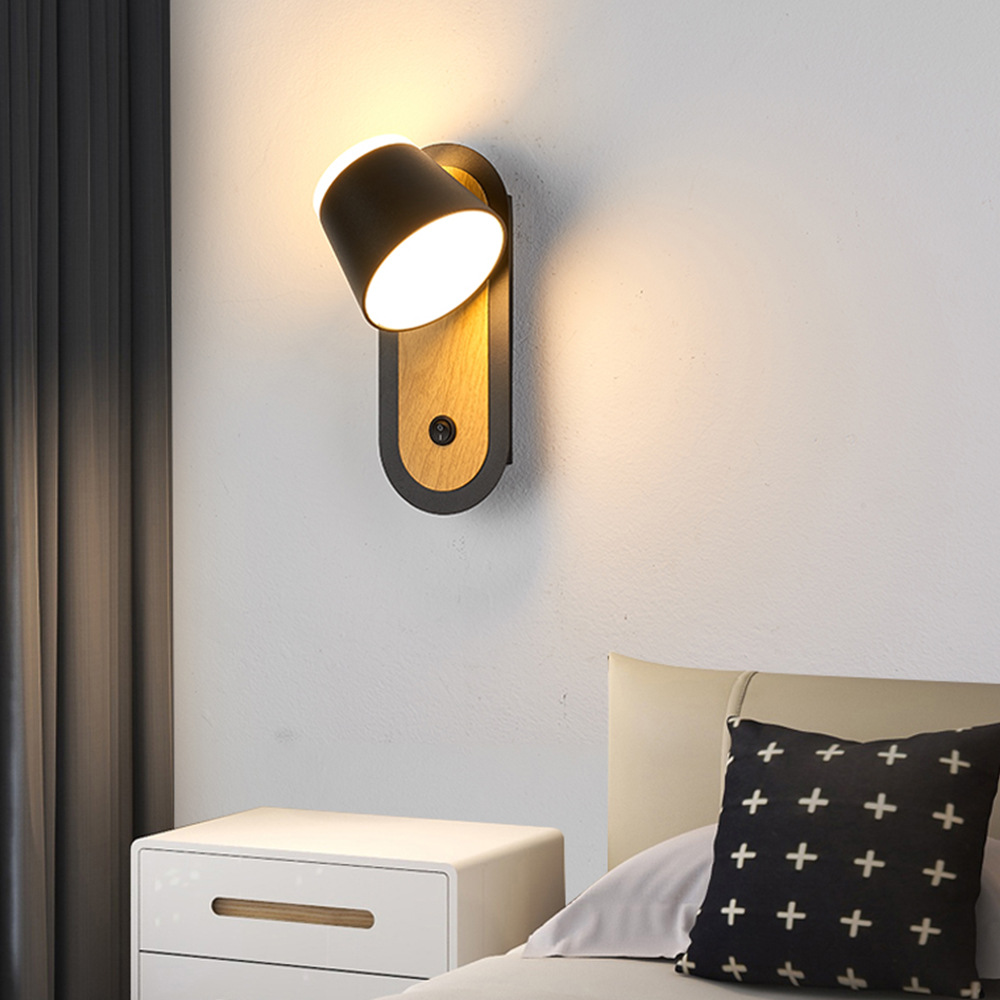Innovative Trends in Indoor Wall Lighting: Flexibility, Sustainability, And Wellness-Centric Designs
The indoor wall lighting sector is undergoing a transformation, driven by consumer demand for adaptable, eco-conscious, and health-focused solutions. Modern designs are breaking away from traditional
fixed fixtures, embracing versatility and user-centric innovation. Here’s a closer look at the latest trends reshaping this niche.

1. Hyper-Adjustable Fixtures for Personalized Illumination
A standout innovation in contemporary wall lights is their unprecedented flexibility. Models like the one depicted in Image 3 feature 360-degree rotation and 90-degree tilt capabilities, allowing users to direct
light precisely where needed. This adjustability supports task lighting for reading or cooking while enabling ambient mood-setting. Such designs cater to evolving lifestyles in compact urban homes, where
multi-functional spaces require dynamic lighting solutions.
2. Biophilic Materials and Circadian Wellness
Sustainability meets aesthetics in fixtures integrating natural materials. The wooden accents seen in Image 2 and Image 4 exemplify a shift toward biophilic design, blending organic textures with sleek
metallic or plastic components. Beyond visual appeal, manufacturers are exploring circadian lighting—fixtures that mimic natural light patterns to regulate sleep cycles. While not explicitly shown, the warm
tones in Image 1 and directional focus in Image 3 hint at wellness-oriented engineering, aligning with growing consumer interest in holistic health.
3. Energy Efficiency Through Precision Lighting
Modern led technology enables targeted illumination, reducing energy waste. The directional heads in Image 1 and Image 3 exemplify this approach, concentrating light on specific areas instead of
diffusing it broadly. This not only enhances functionality but also aligns with global sustainability goals, offering a practical response to rising energy costs and environmental awareness.
4. Minimalist Aesthetics with Maximum Impact
Clean lines and geometric forms dominate current designs, as seen across all images. The fusion of wood and matte metals in Image 2 and the stark white-and-wood contrast in Image 4 reflect a
preference for understated elegance. These fixtures serve as both lighting sources and decorative elements, appealing to homeowners seeking seamless integration with Scandinavian, industrial, or
contemporary interiors.
Market Implications and Future Outlook
The indoor wall lighting market is poised for growth, projected to reach $8.2 billion by 2027. Innovations in adjustability, eco-friendly materials, and wellness features are key differentiators. Manufacturers
are also experimenting with smart integrations, though early adopters prioritize simplicity—evident in the tactile switches in Image 1 over complex IoT systems.
As consumers prioritize flexibility and sustainability, the industry’s focus will likely deepen on modular designs, recyclable materials, and energy-efficient technologies. The future of indoor wall lighting lies in
balancing aesthetic appeal with functional intelligence, creating fixtures that adapt to both spaces and user needs.
